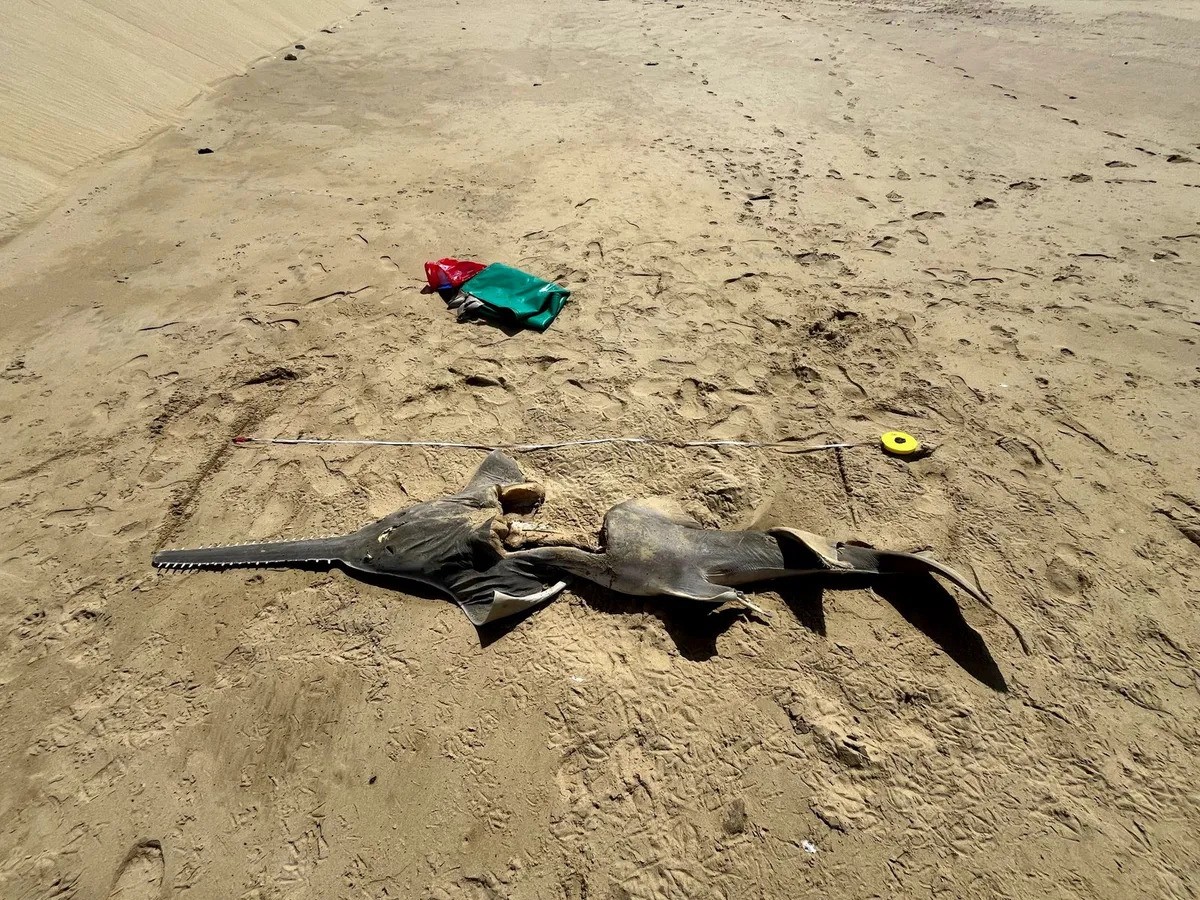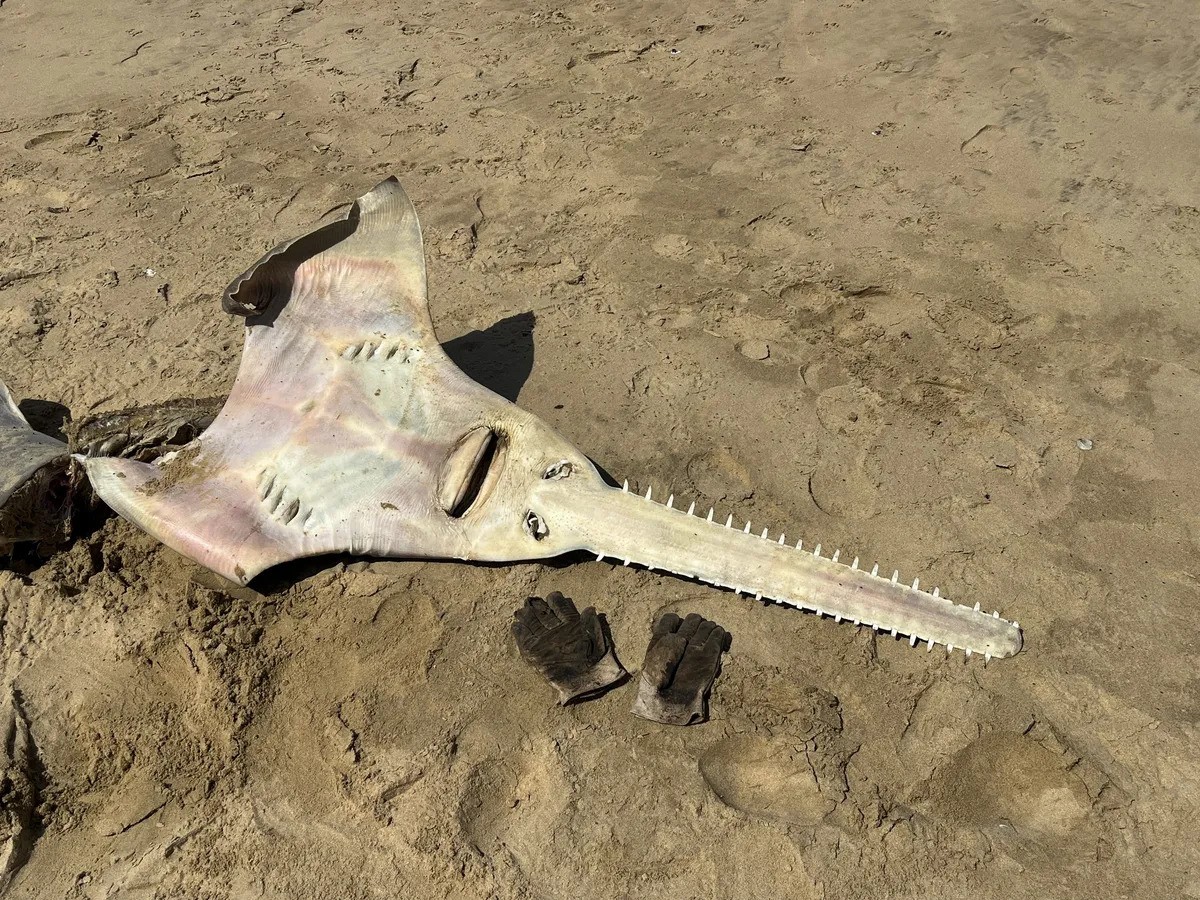These giant, guitar-shaped fish have not been spotted in this part of the world since the 1990s, leading many to assume they had vanished in the region. However, to the surprise of locals and scientists, the body of a largetooth sawfish recently washed ashore, dispelling some myths about the species’ demise.
The rest of this article is behind a paywall. Please sign in or subscribe to access the full content.
The carcass of the largetooth sawfish, measuring 2.93 meters (9 feet 7 inches) in length, was found on September 19 along the mouth of the Birha River in the Eastern Cape, South Africa.
Local resident Mike Vincent stumbled across the strange specimen and decided to send an image to Kevin Cole, a natural scientist at the East London Museum.
“It was surreal seeing this shark-like ray with its long saw-snout […] I just sat next to it for a while, pondering the moment,” Cole told IFLScience.
Largetooth sawfish look like a half-fish and half-chainsaw. Although their bodies are similar to a shark’s, they are technically rays. It’s hard to miss their stand-out feature: a long, flat snout that’s lined with pointed teeth. They use this saw-like appendage to hunt fish and dig around the seabed.

When Cole arrived on the scene, the body had been pecked by seagulls.
Image courtesy of Kevin Cole
It’s unclear how the largetooth sawfish died, although it does appear to have a bite taken out of it. It’s possible this was a predator or the work of scavengers that picked apart the carcass after they had perished.
“[It was] most likely a predator, judging by the wound. There wouldn’t be a terrestrial creature that could have eviscerated the animal like that. Some researchers will be exploring whether an orca may be involved, but unfortunately, the carcass was not swabbed for DNA. The interpretation will have to stand with images taken of the carcass,” Cole explained.
Nevertheless, it’s great to see a largetooth sawfish in this neck of the woods (even if this individual had seen better days).
Different species of largetooth sawfish were historically found in many tropical and subtropical waters around the globe, sometimes venturing upstream from salty coastal waters towards freshwater lakes. But Cole said the last time the species was recorded in South Africa’s coastal waters was 1999. Since these are critically endangered on a global scale, many feared the worst for the local population.

Why the odd face? Another shot of the largetooth sawfish.
Image courtesy of Kevin Cole
Evidently, this doesn’t seem to be the case. After the recent discovery, Cole has since received several reports of similar fish that washed up nearby at Kayser’s Beach, suggesting these animals might be more abundant than previously feared.
“This will certainly suggest that the species still occurs along the eastern coast of South Africa and the record will make the public more aware of sawfish, which may reveal additional records in the future. Recreational anglers and beachgoers will now be more vigilant to future strandings, revitalising research on the species,” explained Cole.
Source Link: Giant Guitar-Shaped Sawfish, Thought To Be Locally Extinct For 26 Years, Washes Up On Beach Unexpectedly